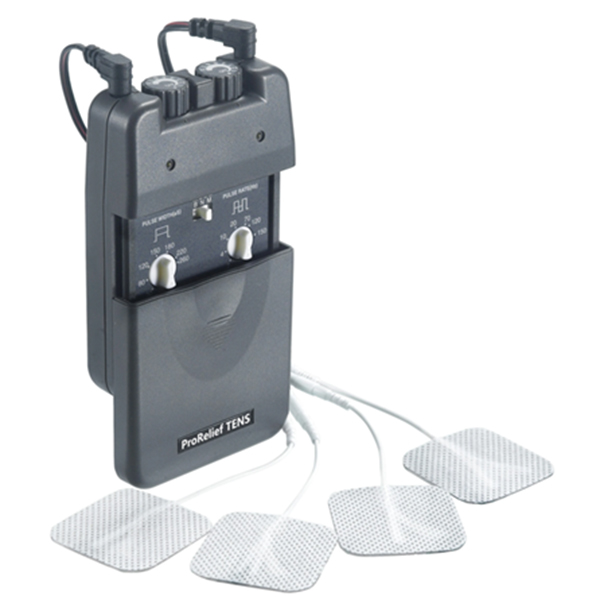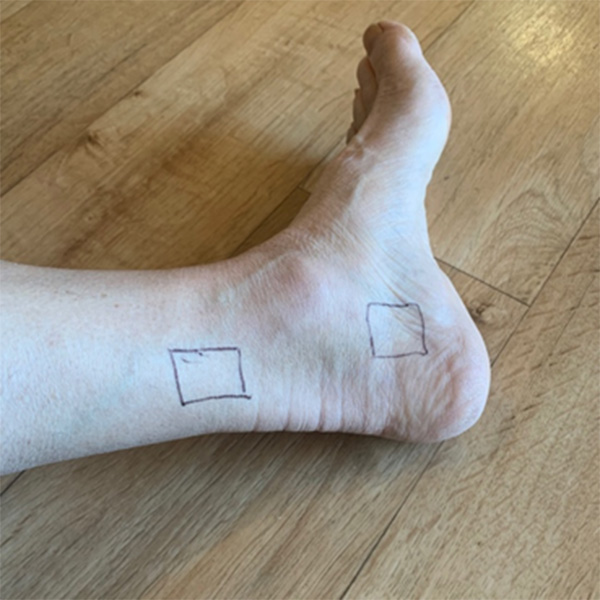WHAT IS TENS
TENS is a small, battery operated device which has been used for many years for pain management. TENS is also used for pain conditions for example low back pain or for pain management during labour.
It is a small device like the one shown. This one fits in the palm of your hand.

OVERACTIVE BLADDER
But for some years now we have known that it can also be used to help people with “overactive bladder”. We have talked in previous blogs about overactive bladder: it is common condition across any gender. Just to re-cap, “overactive bladder “ is the name given to a bladder which tells you to go to the toilet much more frequently than normal. Some people are always needing to go to the toilet. The bladder may also leak as you try to get to the toilet.
HOW DOES IT WORK?
TENS works by applying a gentle, battery driven electrical impulse through the nerves that connect to the bladder. These gentle impulses interfere with, and therefore settle down, the constant bladder muscle activity which is making you frequently feel like you need to empty your bladder.
TENS AND OVERACTIVE BLADDER NEW RESEARCH
We have known it works for some time, but recent research gives us more details on how much intensity to use, how often, and how to be sure that we have the sticky electrodes in the right place.
The current research also tells us that we should perhaps think of using TENS more as a first line treatment along with pelvic floor exercise and bladder training. These latter 2 interventions have been the first line treatment for many years. Traditionally, we used these options first and if not successful, would maybe look at TENS. Usually we would talk of using medications from your G.P. even before considering TENS. We were unsure how often it should be used so tended to go for the “more is best” option which for some people, proved to be a barrier to using the TENS at all.
HOW SHOULD WE USE TENS
We now think that it can be effective using it 2 to 3 times a week for at least 30 minutes for a 6 week period. If used in conjunction with exercise and bladder training, it may help the other interventions to work better.
We have always known that the electrodes could be placed on the sacrum (this is the area at the back of the pelvis below the spine). We have also known in more recent years that the electrodes could be placed at the inside of either ankle. This is where a particular nerve is very close to the skin: it is called the “posterior tibial nerve” and it exits the sacrum at the same level as the nerves to the bladder.
WHY IS ANKLE SUPERIOR?
We now know that we can set the parameters of the TENS, ie the intensity and the frequency of the impulses, by actually looking for a small muscle twitch of the toe. Once we find this, we know the TENS is in the correct place making it more accurate. With the sacrum placement, we have no sign to show us we are getting to the right nerves. So we now know that the ankle placement is the better option.
(Please note however, that someone who has impaired or no sensation in the legs, or an amputation of the leg, can happily use the TENS at the sacrum.)
The following picture shows the approximate placing of the electrodes at the ankle:

If you would like help with overactive bladder or feel frustrated that other approaches haven’t helped, come and see us. We have in-person and telehealth appointments available, bookings can be made through our website. We use the TENS machine in our practice as a low cost and effective technique, costing around $60 for the machine (December 2021). They can become quite costly with added features, for this treatment a simple TENS like the one shown above will work.
(Overseas readers please note: TENS machines can not be shipped from Australia to other counties as they are a medical device. Please reach out to a pelvic floor physiotherapist in your country for further assistance.)

